Scientific name Solanum aviculare Rank Species | Genus Solanum Higher classification Solanum | |
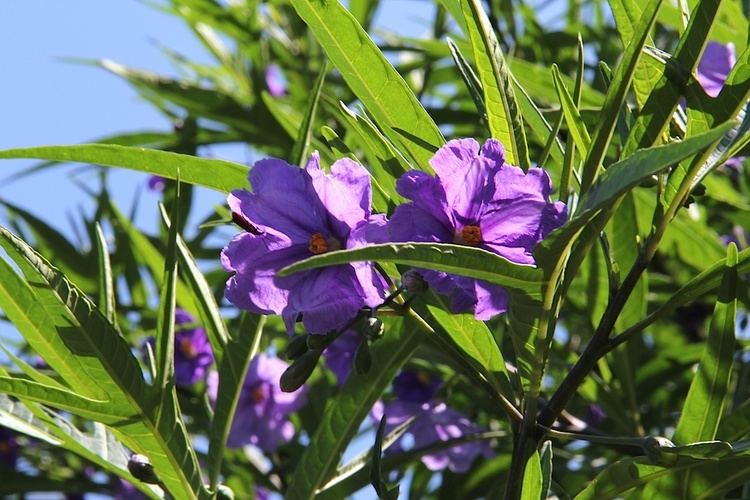 | ||
Similar Solanum, Tasmanian Kangaroo Apple, Nightshade, Solanum aculeatissimum, Solanum americanum | ||
Solanum aviculare, commonly called poroporo (New Zealand), kangaroo apple (Australia), or New Zealand nightshade, is a soft-wooded shrub native to New Zealand and the east coast of Australia.
Contents
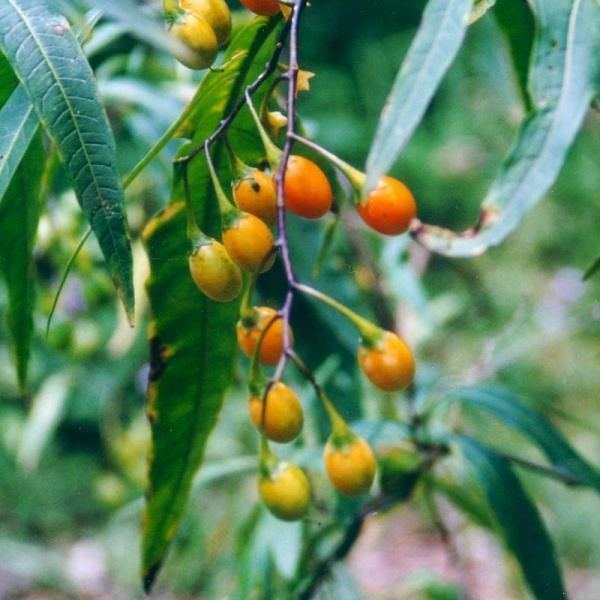
Taxonomy and systematics
Solanum aviculare was first described by German naturalist Georg Forster in 1786, from a collection in New Zealand.
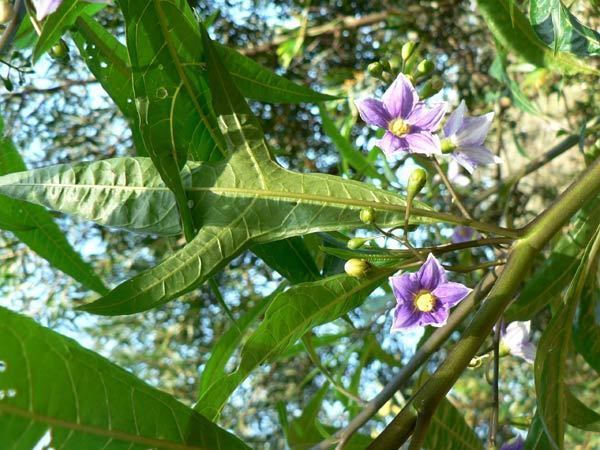
S. aviculare has smaller, flowers (usually pale blue, sometimes dark purple, white or striped blue / white) with acute corolla lobes, it has smaller seeds, up to 2 mm (0.079 in) long, and a different chromosome number (2n = 46) and is found on the Kermadec Islands, North Island, northern South Island and Chatham Islands of New Zealand, while S. laciniatum has much larger, rotate, darker purple flowers with broad, flared (ruffled) corolla lobes with rounded apices, larger seeds that are 2–3 mm (0.079–0.118 in) long, and a different chromosome number (2n = 92). It is mostly found south of Auckland and is very common in the southern North Island, South, Stewart and Chatham Islands. Solanum laciniatum is the most commonly found species overseas where it is often incorrectly called S. aviculare.
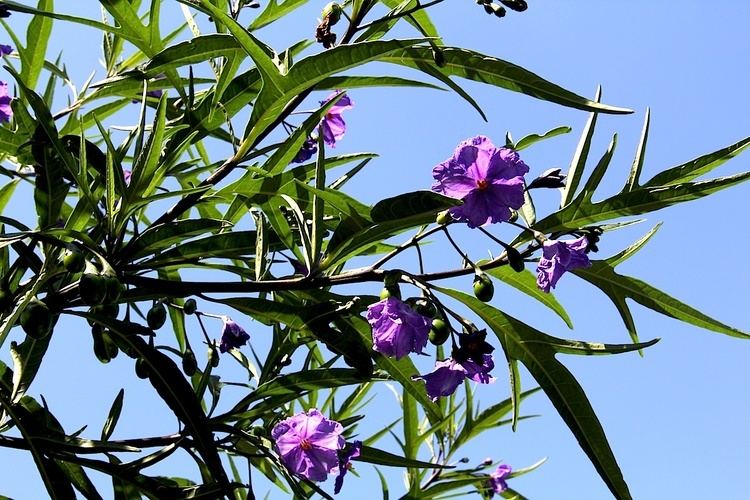
In addition to this two varieties of S. aviculare have been named. S. aviculare var. albiflorum is a minor genetic sport of S. aviculare and is generally not regarded as distinct but S. aviculare var. latifolium has a different growth habit, much broader, usually entire leaves and larger flowers, and in New Zealand (where it is endemic) it is still accepted as distinct by many botanists.
Description
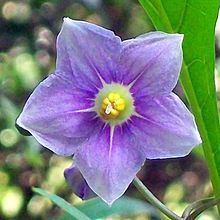
Solanum aviculare is an upright shrub that can grow up to 4 m (13 ft) tall. The leaves are, 8–30 cm (3.1–12 in) long, lobed or entire, with any lobes being 1–10 cm (0.4–4 in) long.
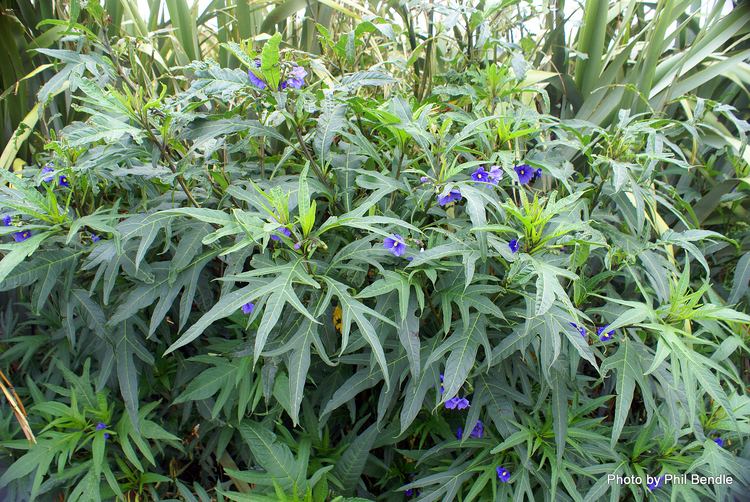
Its hermaphroditic (having both male and female organs) flowers are white, mauve to blue-violet, 25–40 mm (0.98–1.6 in) wide, and are followed by berries 10–15 mm (0.39–0.59 in) wide that are poisonous while green, but edible once orange.
Distribution and habitat
Solanum aviculare grows in rainforests, wet forests and rainforest margins on clay soils. Associated species include the rainforest plants Golden sassafras (Doryphora sassafras), black wattle (Acacia melanoxylon), and lillypilly (Acmena smithii), and wet forest species brown barrel (Eucalyptus fastigata) and turpentine (Syncarpia glomulifera).
Ecology
Bees are thought to pollinate the flowers.
Uses
The leaves and unripe fruits of S. aviculare contain the toxic alkaloid solasodine. S.aviculare is cultivated in Russia and Hungary for the solasidine which is extracted and used as a base material for the production of steroid contraceptives.
The plant is also used as a rootstock for grafting eggplant.
The orange berries are an edible form of bush tomato either fresh or dried.
